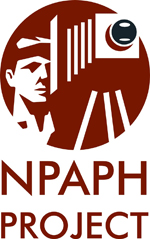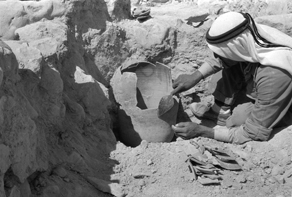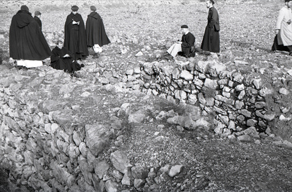
THE NON-PROFESSIONAL ARCHAEOLOGICAL PHOTOGRAPHS PROJECT
By Bart Wagemakers, University of Applied Sciences Utrecht, the Netherlands

Context
The decisions surrounding the assemblage of records during the excavation, and the publication afterwards, are usually made by the professional staff involved. It is obvious that the decisions made by the staff are of great consequence for a site, because an area undergoing excavation is irreversibly disturbed. As the discipline of archaeology has developed significantly during the last six decades, it is inevitable that the views on how to record the progress and finds of an excavation have changed as well. All the developments that have influenced archaeological recording suggest that there may be a gap between what archaeologists recorded in the past and what we nowadays expect them to have documented.
The former ‘non-professionals’ – participants of excavations who were not part of the trained staff, but who supported the dig as part of their continual education or out of interest, e.g. students and volunteers – may be the ones who are able to fill in the possible gap in the official documentation published by the academic staff, including in the area of archaeological photography. Students and volunteers who are willing to participate in an archaeological expedition show an interest in all divergent aspects of the site. From my own experiences, I know that students and volunteers often record many features of a site that lie beyond the focus of the professional staff.
This has been demonstrated by a recently discovered photo collection of a former student of the École Biblique in Jerusalem, Leo Boer. Together with his lecturers and fellow-students, Boer visited numerous archaeological sites in the Levant throughout the 1950s. While visiting the sites, he took many photographs, hundreds in total, and wrote a complete account of his travels, consisting of 140 pages. Boer has taken pictures of artefacts and structures at sites which the official staff seemed not have documented at that time. For example, Boer photographed a pillar that interested him at Khirbet Qumran in 1954 (published in PEQ 143.2.) The Qumran excavation staff did not take a close-up photograph of the pillar, but Boer’s photo provides us more information about how this room was used in the past. Since photographs from the Boer collection have proven to be significant for the archaeological study of the region, it was decided to make all the photographs accessible to the public by founding the digital Leo Boer Archive hosted by the ASOR Archives. (See samples from the collection here, or view the entire collection online – click the green arrows to load an image.) It is instances like these that have proven that there is a need for a resource like the NPAPH Project.
The Principles of the Project
The NPAPH Project is based on three principles:

2) Archaeological institutions have an interest in digitizing newly-discovered non-professional photographs and making them accessible to both scholars and the general public. It has become practice for institutions to collaborate on a specific archaeological campaign and share the newly-discovered photographic material via digital databases. The release of new digital documentation will provide publicity for the excavation and the related institution(s) and may also be a stimulus for fundraising. Another argument for an institution to create an accessible digital archive containing non-professional photographs is the ability to cross-link the photos with other items on the institution’s website, or in its library. We know that virtual visitors, after consulting a digital archive, often make use of other services and information offered on the website. Visitors may even be encouraged or inspired to share their own archaeological photographs to be published online by the project.

Join the NPAPH Project!
The project will compile a one-stop portal for non-professional photography of archaeological sites. The portal will be useful for archaeological institutions to trace non-professional photographs of their excavations, to digitize and place them in an accessible digital archive for both scholars and the general public, and to foster institutional collaboration – all of which will benefit the archaeologist and archaeology enthusiast. After all, ‘digging’ into the archaeological past in this way will not only be beneficial to present archaeological research, but it will also be an inspiring assignment for our students and volunteers of today, to assist in the process of tracing, collecting and digitizing photographs.
If you would like to participate in this project, or, also of importance, are willing to make a donation in order to support the project, please contact Bart Wagemakers.